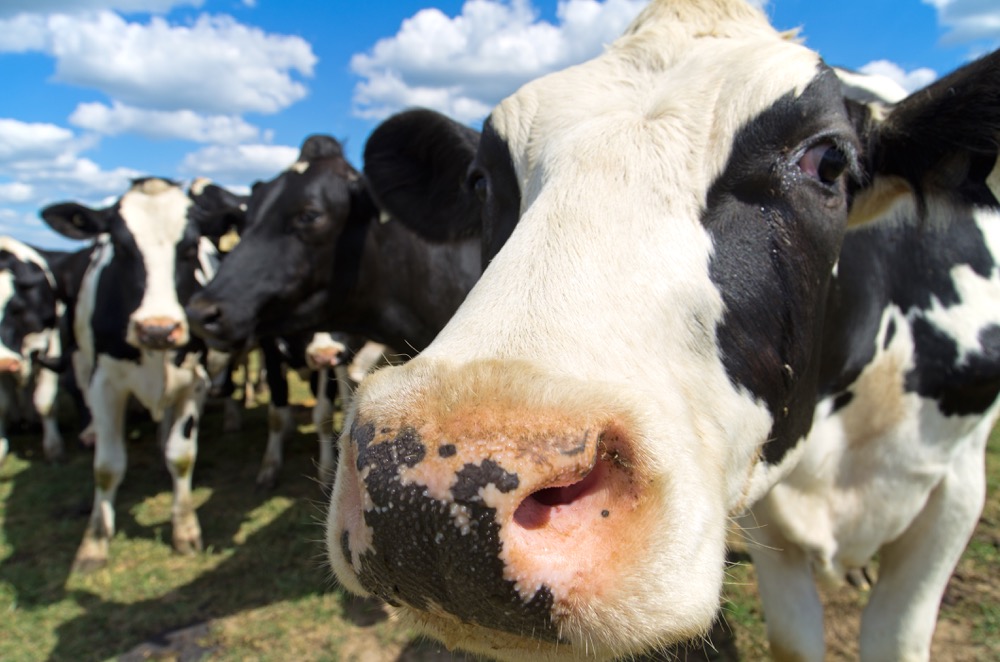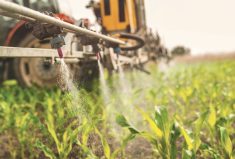I was thinking of my friend Ashley Fraser and the time I spent on his farm.
The Australian innovator grew a variety of specialized seed crops for certified seed and birdseed, with the screenings going to the feed bunk ration. It was a waste-free way of looking at seed production and usage.
In his climate Ashley was also surrounded by olive groves and vineyards, so he built a processor to take the discarded skins from the grapes that were used for wine (pulp) and oil (seed) to turn into high-end grape skin flour. The dark-purple flour is used by specialty bakeries.
Read Also

Guarding against misinformation: Do you believe in house hippos?
Misinformation and disinformation run rampant in today’s digital age. Farmers must be wary of the digital dangers and know how to keep themselves safe.
I love models like this where innovators utilize the whole product in a series of systems for further value adding, and flour is an area where there are many possibilities. I have often enjoyed chickpea flour in East Indian cuisine, barley, almond flour, coconut flour and the super-protein quinoa flour. Others may prefer the taste of amaranth, brown rice, buckwheat, coconut, millet, navy bean, soy, or sorghum flours. Even a tiny grass seed can be made into flour called teff, which is used in Ethiopian flatbreads.
Combinations of these flours, with or without wheat, can also be found in edible cutlery. Baking sorghum, rice, and wheat flour — or simply sorghum and rice flour that has been mixed with water — is a healthy alternative to buying plastic spoons. The cutlery comes in sweet, savoury (rock salt, pepper, carom and cumin seed), or plain flavours.
If you have used a waffle iron you know that you can bake a nice-shaped waffle with a variety of flours. You now can also make your own spoons with edible spoon makers. Fashioned after the waffle maker, the product is a spoon made from the flour of choice.
Edible plates have been around for a while, made mainstream by a Polish farmer who started adding value to the bran extracted from milling wheat by cooking it with water at high pressure. It’s a lot of extra to eat, but if one is full from the meal on the plate, then no worries — the plate is biodegradable. Other innovators have now followed with alternative plate designs in the edible field.
It all sounds rather exciting — the endless possibilities. But truth be told, I don’t get on well with ovens and despite my mother’s many attempts to teach me, I have yet to have something made with flour actually turn out (thus the interest in flatbreads). But I am curious and that led me to research the type of flour I think I can relate to. And that is coffee flour.
The coffee we drink is the roasted bean (stone) which is found within the coffee cherry (coffee is a stone fruit). In the past, the green bean was extracted from the cherry, dried, and then roasted giving it the dark and aromatic flavour that we love first thing in the morning. The pulp of the cherry and the hull around the stone were tossed out. Now the hull and the pulp is saved and ground to make flour. The result is a fruity — or what some might call floral or citrus-tasting — flour for baking. The dark colour gives it the divine look of chocolate, which in my view is another food group.
Chocolate comes from the cacao fruit tree which grows to about 30 feet and sports an abundance of blossoms (several thousand) and 20 large pods that often grow close to the ground on the trunk rather than in the high branches. Inside the pods are seeds protected by pulp. To harvest this fruit, the pods are split, and the seed (beans) and pulp are fermented before the seeds are extracted from the pulp. Once extracted, the seed is roasted and then blown through air to release the outer shell from the internal nib. The nibs are pure chocolate (and pure heaven). Harvest is usually done on the field and the trash returned to the soil. Could we also make a chocolate flour?
You may have guessed that my two favourite fruits are chocolate and coffee, and that both taste good as part of any baked goods. We can consume those goods with edible cutlery in several flavours or even buy a spoon machine to make our own. The next birthday party might include kids and adults making delicious edible cutlery, served on edible plates and using a variety of flours and flavours. What fun!
Innovation in the food space is fascinating to me as is the cultural context of how we use ingredients such as flour. If we can grind the waste from grapes and coffee to make flour and use the bran from milling to make plates, who knows what will be next?
How we choose to present our food at a dinner party, picnic, or in the harvest field can be an exciting experience if we eat the plate and cutlery and do good for the cook and the environment.















